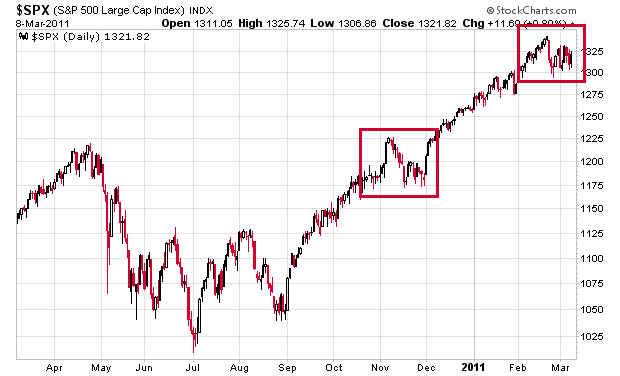(Update, June 23, 2011: Readers may be interested in further coverage of Petrobakken by clicking here.)
Petrobakken (TSX: PBN) has been on the top of my radar screens for oil and gas companies for quite some time. The reason is fairly simple – it appears to be a high-yielding security that has a large amount of reserves and land rights. During my extensive investigations of this company during the autumn of 2010 (when the common equity was at around $23/share) I rejected PBN as an investment candidate.
The past three years of trading have had investors seen their better days in earlier times:

The drop in late 2008/early 2009 can be attributed to the economic crisis and the decrease in oil prices, but the price drop lately can be solely attributed to financial management. In 2009 and 2010 the company engaged in a series of significant purchases with companies with large holdings in the Bakken oil fields (southeastern Saskatchewan). It also has significant holdings in the Cardium (roughly northwest of Calgary and south of Edmonton). These acquisitions were very costly and ended up hurting shareholders.
The company is paying off about $180M/year in dividends to its shareholders when it is spending far above its operational cash flow to drill for more wells in order to keep its production levels steady.
The large dividend yield probably serves as a psychological crutch for investors, in addition to providing its parent company, Petrobank (TSX: PBG), with a cash stream. Petrobank owns roughly 60% of Petrobakken. This appears to be a classic example of knowing the risks of investing in companies that are majority-held or controlled – a retail investor’s interest may not be in alignment with the parent company, and when this is the case, you may receive an adverse outcome.
The big operational issue in the Cardium and Bakken fields is that your production falls off steeply after the initial drilling (as opposed to your typical Steam-assisted gravity drainage project that a company like Cenovus does):

Although the capital expenditure can be justified, the economics are not as pleasant as what most people may anticipate by looking at the “trend” of oil production based on first year results. Most of the growth in revenues has to be looked at with the knowledge that the first year of wells will be extraordinarily high, while the second and subsequent years will have slower, but steadier production.
In 2010, PBN took in about $562M in operational cash flow, but they also spent $36M repurchasing their common shares (questionable given their balance sheet), $812M in capital expenditures, $483M in corporate acquisitions (mainly for land rights discussed previously). When you net everything together, the company had to borrow $750M in cheap financing (6-year notes, 3.125% coupon) and also maintain a line of credit with a bank ($825M outstanding of $1.2B available) in order to finance all of this spending and payouts.
Although the company is producing a lot of operational cash flow (in particular, they like quoting the statistic funds flow from operations, which was $3.51/share in 2010), in order to maintain this cash flow they need to continue spending significant sums of money on capital expenditures.
The valuation then becomes a matter of determining the decay rate of the various wells drilled on the Bakken/Cardium fields and the prevailing price of oil – and there are smarter people than myself that can model the decay rate better.
Most retail investors, however, would just look at the dividend yield at the current $19.60/share and say “Wow, look, 4.9%!” and buy in, not realizing that the company has probably hit the point where it can’t borrow money as cheaply as it has in the past. If you look at the GAAP net income, 26 cents per share does not look that impressive compared to the share price. One does have to model for a significant amount of depreciation (which is a non-cash expense that represents money already paid for drilling) in order to receive a more relevant free cash-flow figure.
This is not to say that Petrobakken is not a legitimate oil company – just that to my knowledge, its equity valuation does not represent an under-valuation at present, even factoring in the existing price of oil.


